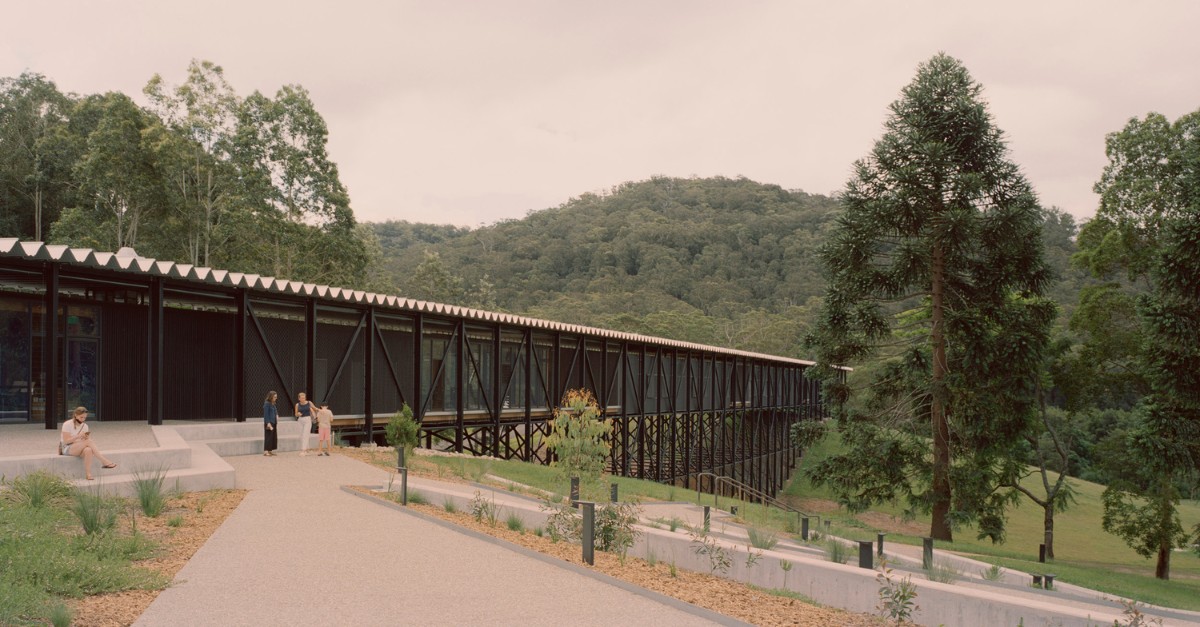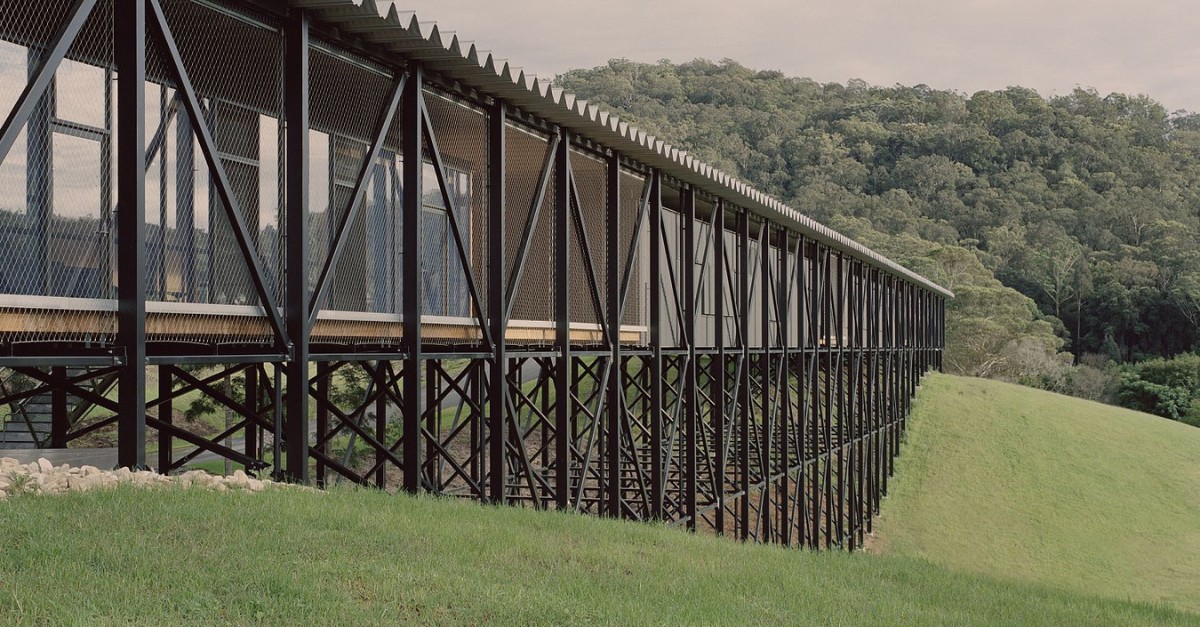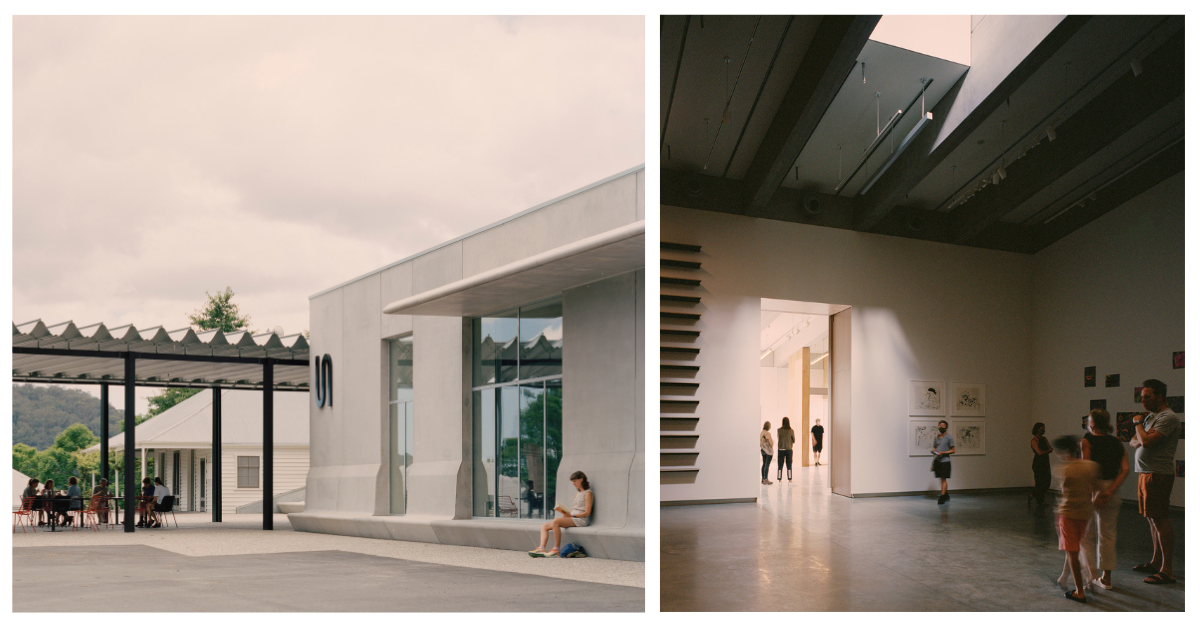BIOPHILIC DESIGN CASE STUDY:
Bundanon Art Museum & Bridge

Location: Dharwal Country, Illaroo NSW
Client: Bundanon Trust
Typology: Civic
Architecture: Kerstin Thompson Architects
Engineer: Irwin Consult (later WSP)
Builder: Adco
Over the summer of 2019/2020 Australia’s east coast was indelibly marked by bushfires of unprecedented intensity, and Autumn 2022 saw it inundated by extreme flood events. Bundanon’s 45M art collection was under threat from fires in the immediate vicinity over Christmas of 2020. Fires and floods are consistent with the site’s weather patterns and with intervals between extreme events reducing, it was crucial that this environmental characteristic inform the new build.
The resulting design is as much driven by resilience and resistance as it is by ecological repair, connection to the natural climate and Indigenous land management practices. Variations in climate are central to the visitor experience, harnessed as opportunities for delight and connection with place through a responsive and sustainable infrastructure with the site’s ecology at its heart. The project explicitly uses architecture to orchestrate an array of relationships between ourselves and the climate of Bundanon through spectrums of interiority, climate modification, orientation to ground. Through feeling climate our awareness of the particular and changing qualities of a specific place are heightened.
This project required and demonstrates an important conceptual shift for architecture: from isolated artifact to part of an integrated system encompassing ecology, landscape, infrastructure and architecture; from a pictorial to performative landscape in which the flow of water especially is supported by architecture for climate adaptation in combination with ongoing cultural practices and land management.


Project Photography: Rory Gardiner courtesy Kerstin Thompson Architects